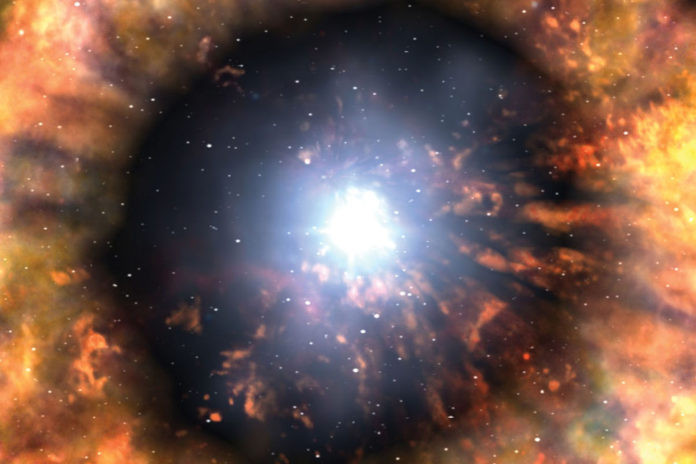A supernova is the explosion of a star at the end of its life cycle. In a typical galaxy, a supernova occurs about once every 50 years. A supernova releases a tremendous amount of energy. The energy produces a bright light in the night sky that may last a few weeks.
Death of a Star
When a star begins to run out of fuel, it is approaching the end of its life cycle. Smaller stars collapse and become a neutron star. However, if the star is large (about ten times larger than our sun) a supernova may occur.
A young star is in balance between the inward pull of gravity and the outward push of fusion reactions. As the star ages and uses up the fuel for the fusion reactions, gravity begins to win the tug of war. The star begins to collapse inwards under the pull of gravity. The core of the star heats up and becomes more dense. Eventually, the inwards collapse turns into an outward explosion and creates a supernova.
If the star is very large (20-30x larger than our sun), the star will collapse and become a black hole.
Types of Supernovae
There are two types of supernovae.
The Type I supernova is created in a binary star. A binary star is a star system with two stars. The gases from one star in the binary system are drawn to the other star. There, the gases compress and eventually cause the star to explode.
The Type II supernova is more common and is the result of the death of a typical star.
Reflections
Vocabulary
- binary star
- fusion
- supernova
Notes
- When a mid-sized star dies, it may become a supernova.
- The supernova is first triggered by the collapse of the star followed by an explosion.
- The most common supernova is the Type II.

